Hiking with camera and tripod
2 Comments
In a previous post, I explained why the main situation when I will not use my tripod for landscape photography is when hiking a long distance. Whether the hike is “long” is a personal and subjective assessment. In this post, after discuss how I handle the camera and tripod on the trail, I’ll give as few examples some choices I made in recent years while photographing Our National Monuments.
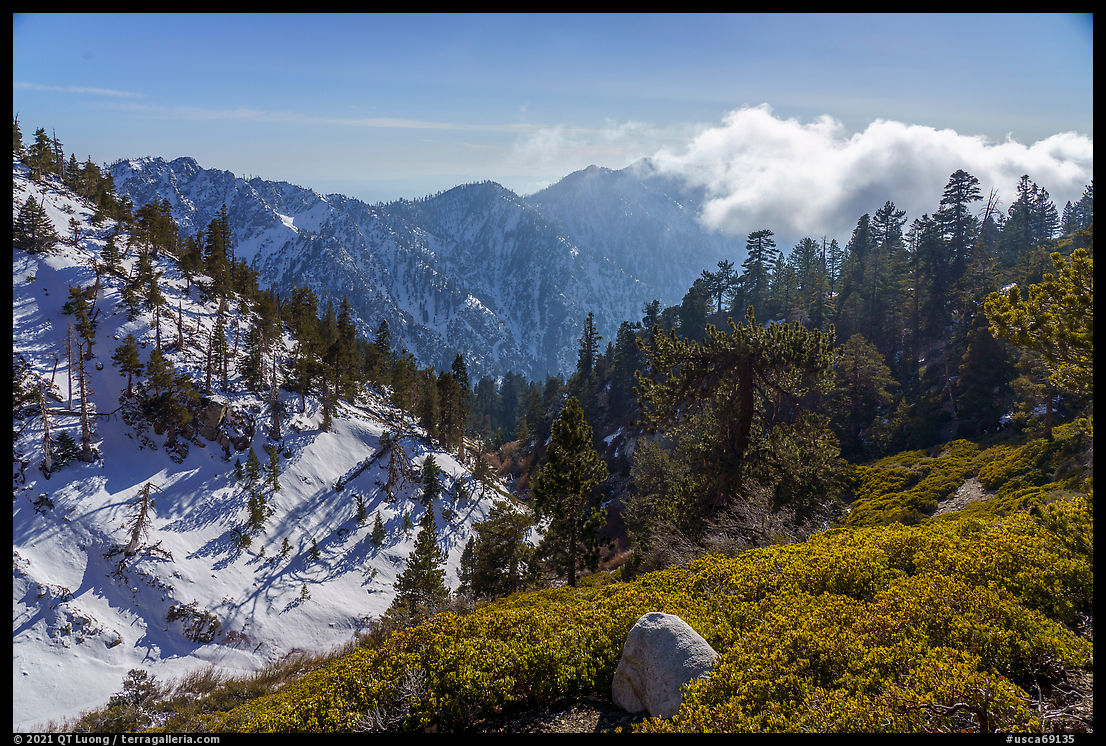
How to carry the tripod
There are three ways to carry your tripod:- Hand carry is my preferred method for any short hike, or a section of a hike when I photograph frequently. It offers the most flexibility for moving around, as you can switch hands, carry the tripod collapsed (better maneuverability and balance), or extended (quicker to use). You can rest your hands by cradling the tripod under an arm. If needed, you can also hold it by the top as a walking stick, for instance, to balance yourself on rocks while crossing a stream. When I hand carry the tripod for any distance, usually I do not like to leave the camera attached, as the combination feels too heavy. Instead, I carry the camera over the neck and shoulder with its strap.
- Over shoulder provides better support and therefore is more suitable for carrying the camera mounted on the tripod. For even better support provided you are on a wide trail, you can close two legs together, open the third leg, and distribute the weight on both shoulders. I am not a big fan of carrying the camera mounted on the tripod because it encourages you to set up the tripod first thing, whereas I prefer to find the viewpoint first and set up the tripod last. Therefore, I rarely use that method, except when I am in such a hurry that I want to avoid folding the tripod – mounting/dismounting the camera is almost instant with a quick-release system.
- Attached on backpack is my preferred method on long hikes when photography is unfrequent. The main reason for that is that I like to use hiking poles for long hikes, especially on steep terrain and/or cross-country, and those require that both hands are free. When switching to hand carry, I have either to fold the poles or hold both of them with the other hand. I guess some photographers do not like the extra time required to take the backpack off and open the tripod. I welcome the opportunity to relieve my back from the weight of the backpack, as opposed of having it weight on me while I am composing.
Two mountain hikes
Try to guess for which hike I carried the tripod:- Snow Mountain, Berryessa Snow Mountain National Monument: Started in the morning, ended in late afternoon, 10 miles round-trip, 2,250 ft elevation gain.
- Mount Baldy, San Gabriel Mountains National Monument: Started at night, ended in late afternoon, 11 miles round-trip, 3900 ft elevation gain.
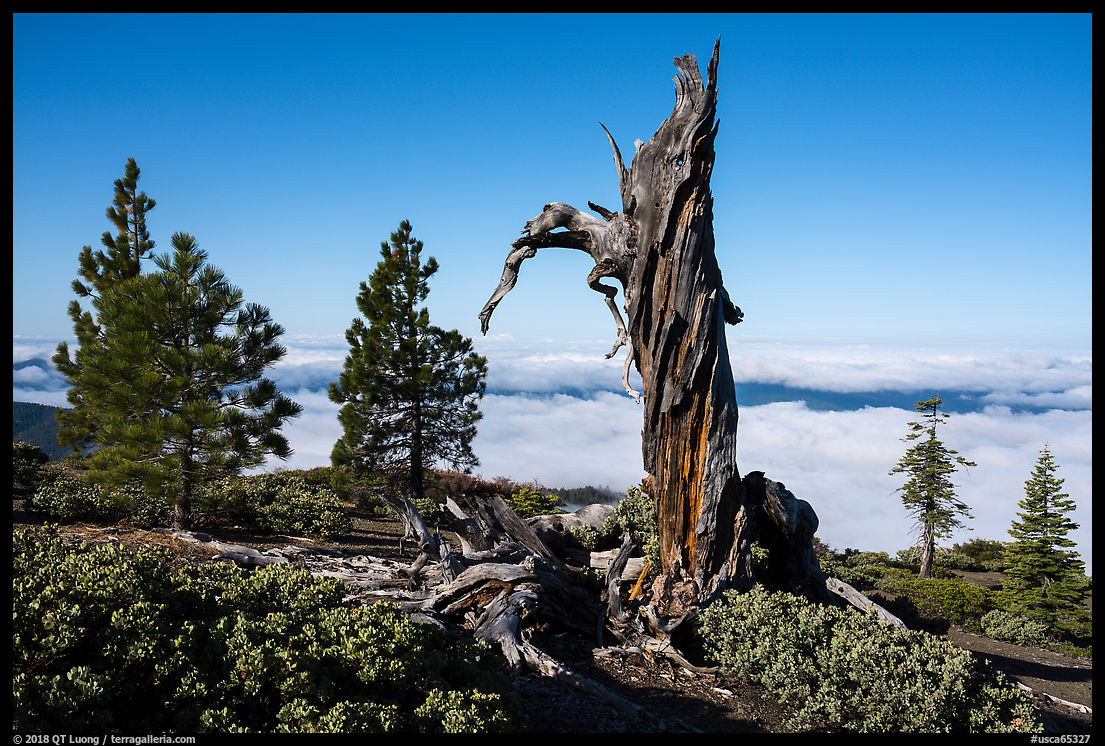
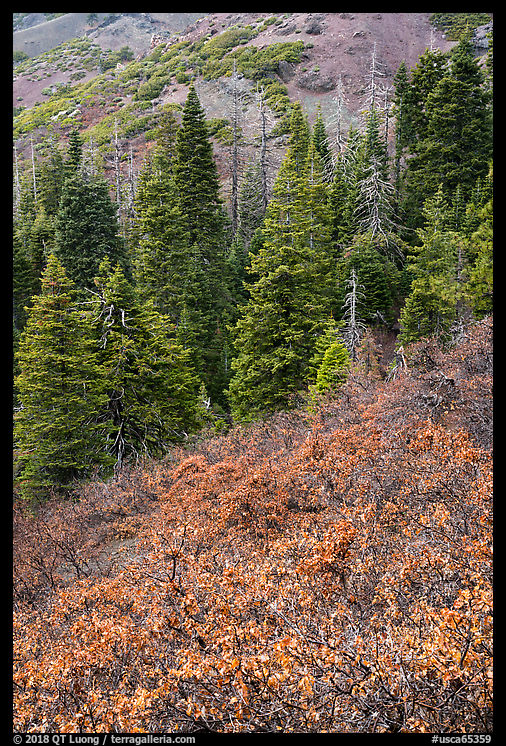
I did not carry the tripod for the first hike, although it was significantly easier. It is because of timing. I did not plan to linger on the mountain at sunset, but instead to drive home that night. Arriving at the summit in midday, there was plenty of light to handhold even a telephoto lens. The most marginal exposure was a forest scene in cloudy conditions where I needed to stop down a 50mm lens to f/22 for depth of field, resulting in an exposure of 1/25 sec, ISO 400, all manageable numbers.
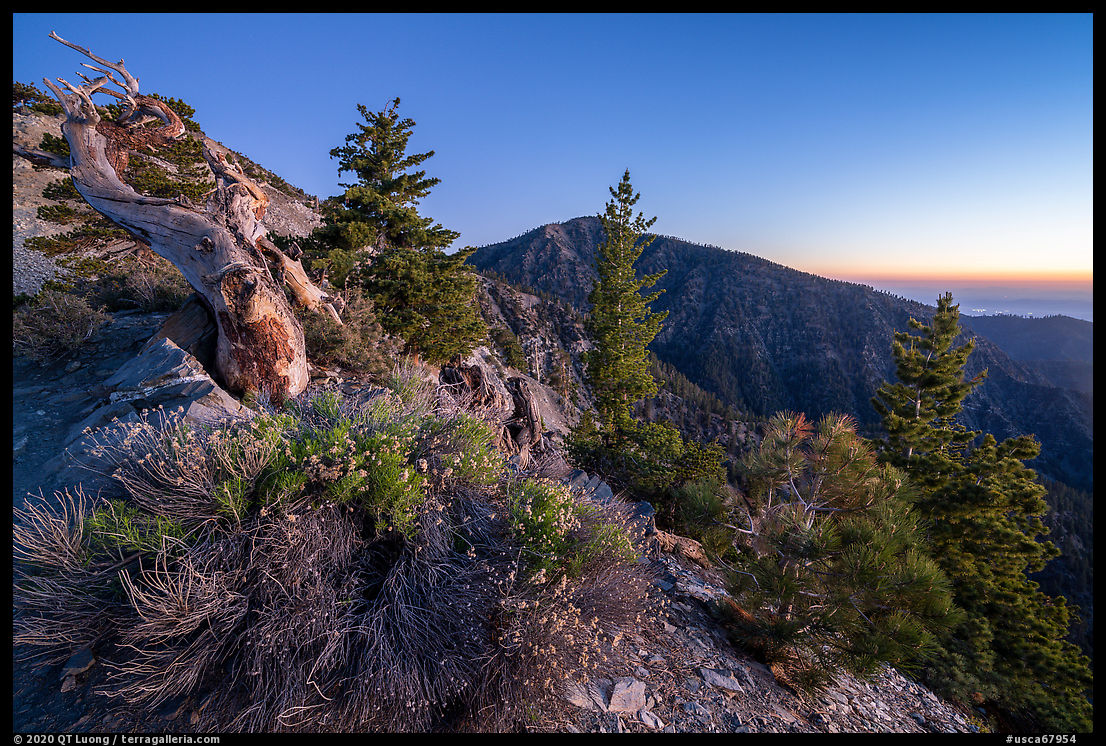
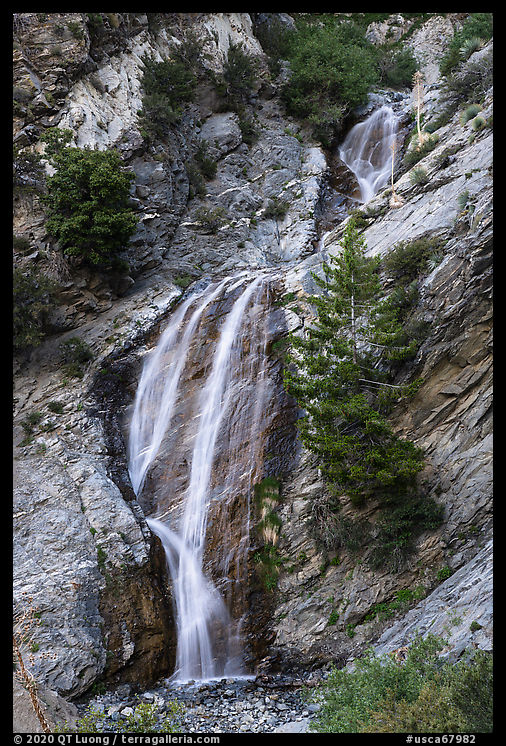
On the second hike, by starting at 2:30am, I got on the Devils’ Backbone at dawn, where I anticipated that the ridge would offer great views. The exposure for the first picture was 17mm, 20 sec at f/8, ISO 100. I carried the tripod attached on the backpack until the ridge and first light, then hand-carried it until about one hour after sunrise, then put it back on the backpack. On the way back, I stopped at San Antonio Falls that I photographed in the shade in the late afternoon. As is often the case for waterfalls, I wanted to be able to use a slower shutter speed, in this case, 95mm, 1/4 sec at f/13, ISO 100 for the second picture. I probably would not have been able to make the low-light images and waterfall images without the tripod, so it was worth the extra effort.
Two long hikes
Try to guess for which hike I carried the tripod:- Paria Canyon, Vermillion Cliffs National Monument: Started and ended at night, 20 miles round-trip, flat.
- High Creek Camp, San Gorgonio Mountain, Sand to Snow National Monument. Started in the morning, ended at night, 14 miles round-trip, 4000 ft elevation gain.
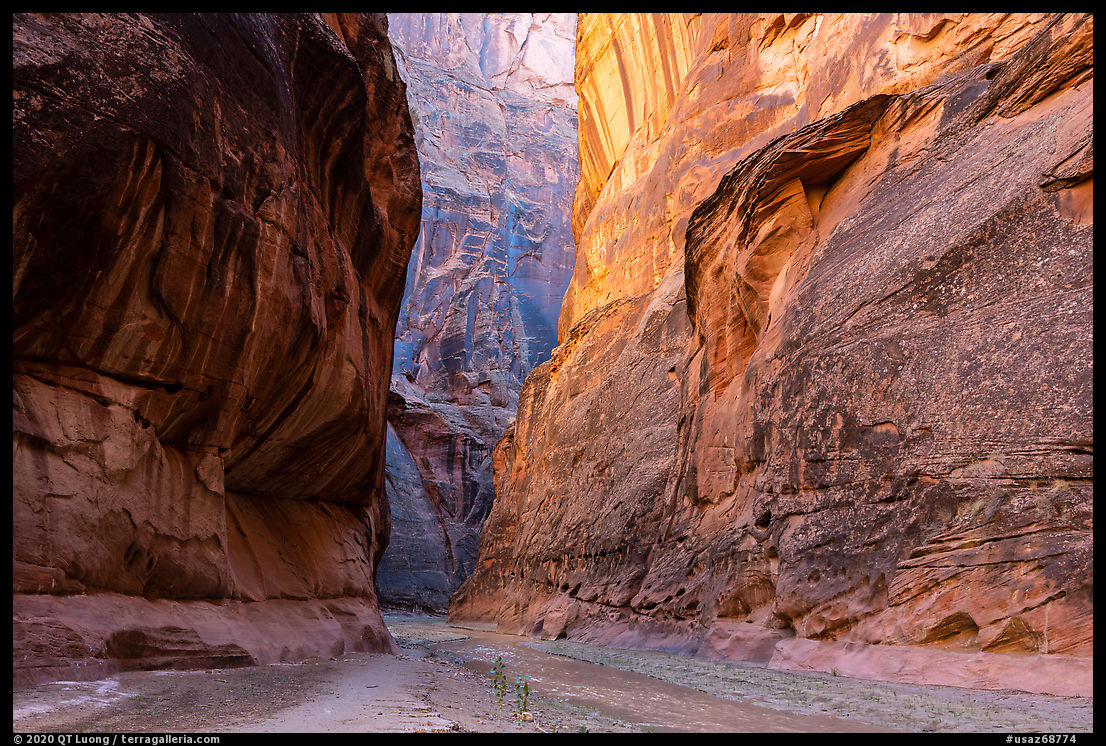
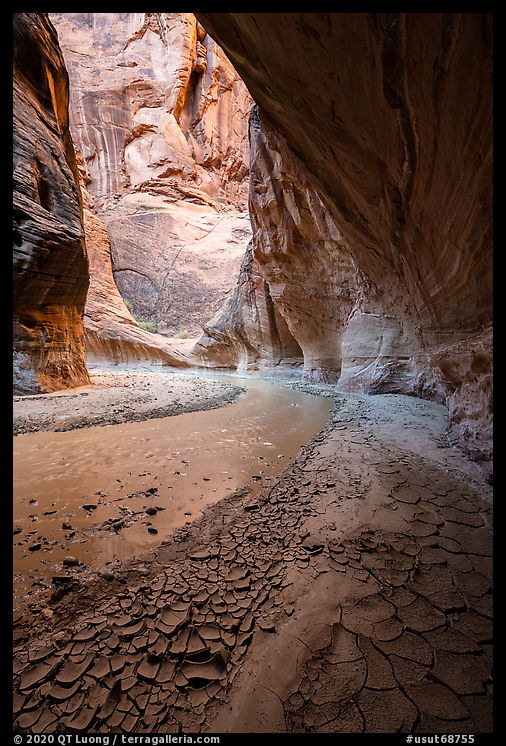
I carried the tripod for the first hike. I anticipated that the canyon would be full of photographic compositions and most of them would occur with the brightest element being the canyon walls lit by the relatively dim reflected light bounced by other walls. Indeed, the first exposure above made at midday was 1/13 sec at f/8, and the second in the afternoon 0.5 sec at f/11, both ISO 100. My timing also meant that I would be in the canyon at pre-dawn and past sunset. You can see more of those photos by following the link. Despite the longer distance, it is also the easier hike of the two, because it is flat: elevation gain always trumps distance.
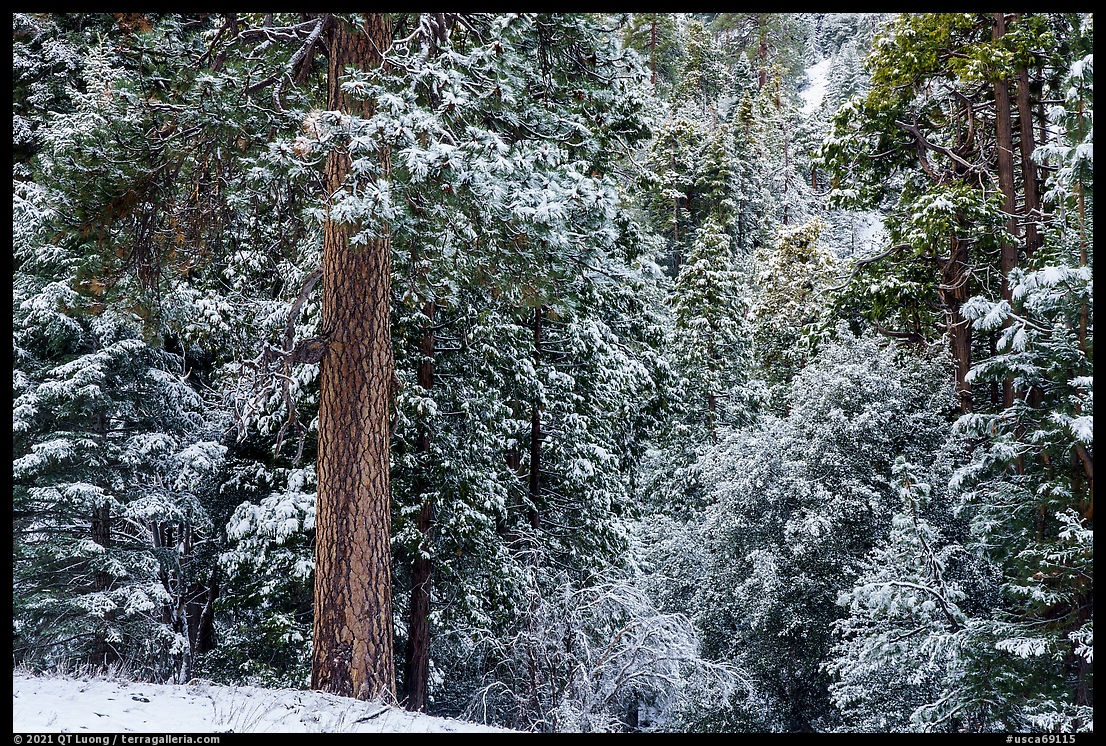
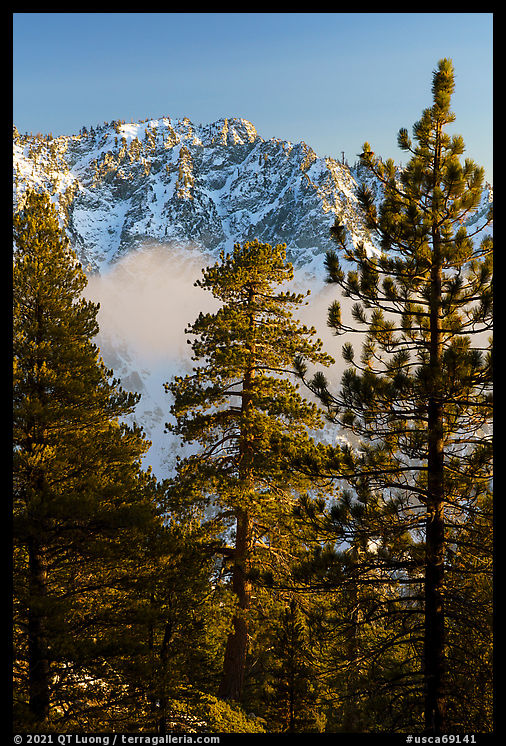
I did not carry the tripod for the second hike. It was more strenuous and I didn’t anticipate too many photo opportunities. When I started, I thought there was a good chance I would have to turn around without summiting and even before reaching treeline, because it was winter and I did not have crampons. That is exactly what happened when above High Creek Camp, some 2.5 miles before the summit, the slopes became too slippery to continue safely, especially with no one else on the mountain. This would possibly leave me only with views obscured by trees. Sure, one can always make an “intimate” photograph, but then there is no need to hike that high. In fact, that’s just what I had done at sunrise time on a two-mile hike – with tripod (exposure for snowy forest: 70mm, 1/5 sec at f/16, ISO 100). That was why I started hiking the mountain only in the morning. And in case I ended up summiting, this would have been a brutal hike of 5500 feet elevation gain. However, I did find a few openings between trees and timed my hike to be near sunset time there. Half an hour before sunset, exposure was a comfortable 65mm, 1/80 sec at f/9, ISO 250. I hiked down to the next opening that I had spotted. The sunset image below is one of the last photographs I made on that day. Did image stabilization save the day?
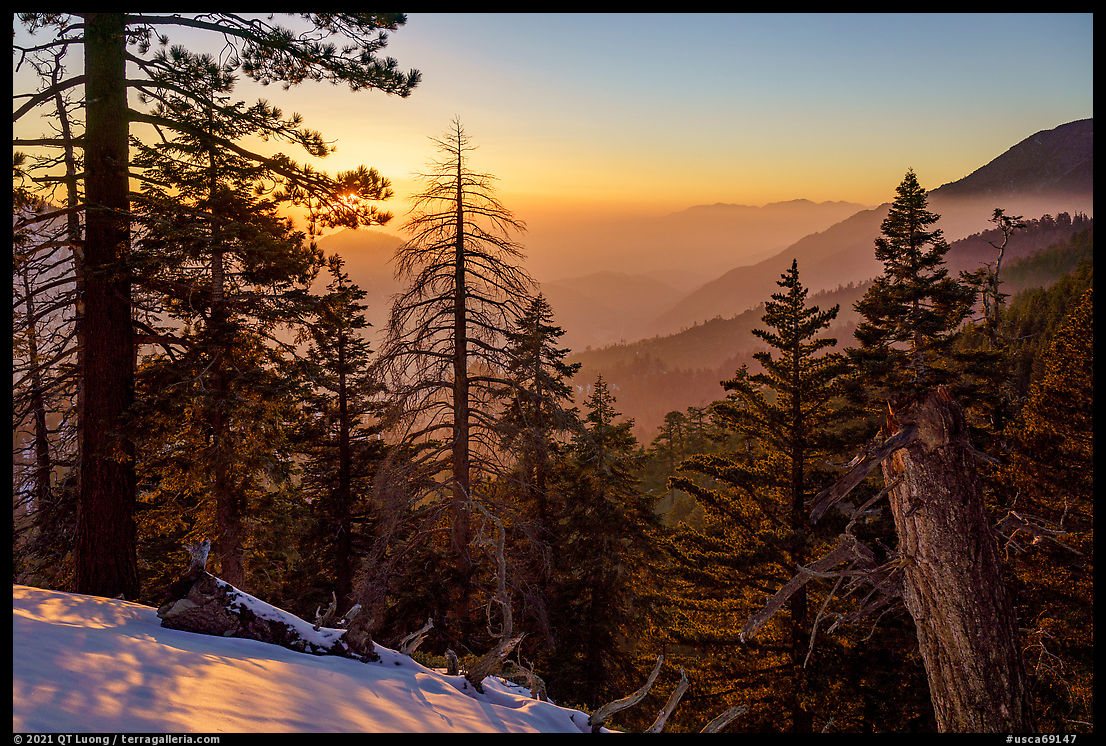
Aiming straight towards the sun in the west, the shutter speed was 1/400s at f/8.0 ISO 100. Who needs a tripod?


To take a tripod or not? That’s a question I’ve been debating lately. I leave for Nepal in about a month to do the Three Passes Trek. For sure I’m taking my A7R IV and 24-105mm f4. But, either the tripod is staying behind or the 100-400mm GM is staying behind. I’m leaning toward leaving the tripod behind. Physically, I’m not sure I could carry both, plus the other items in my pack. Plus, there’s the altitude. Which would you leave behind?
That is a difficult choice. I tried to ask a photographer who leads Himalayan trips, but he didn’t get back to me, hence the delay in replying.
I would take comfort in the fact that the A7R4 and 24-105 alone may cover 90% of my needs.
When going on tough hikes in the US West, I have generally left the 100-400 behind, and sometimes added a fast superwide for night photography (16-25 f/2.8 or 12-24 f/2.8). However, the peaks encountered during those hikes were neither spectacular nor too distant, and for my project, I often tried to picture the larger landscape.
The Himalayas are different. Due the scale of the mountains, you may be further away. The snow-covered, cloud-shrouded, steep peaks make for great portraits when zoomed in to include only the mountain. It’s been over three decades since I have been to the Himalayas and at that time I didn’t really know what I was doing. However, I remember carrying a telephoto up to 200mm, and some of my favorite images used it. I’ve looked at my photobooks with Himalayan photography by Shiro Shiharata and Art Wolfe, and I noticed they used telephoto lenses quite a bit.
In addition, I assume that you will be staying at lodges/villages rather than camping, and therefore may not be in the best position for low-light photography. All factors considered, in your case, I would lean towards the telephoto. Have a great trip, I am jealous, but hope to be able to do that trek in the future.